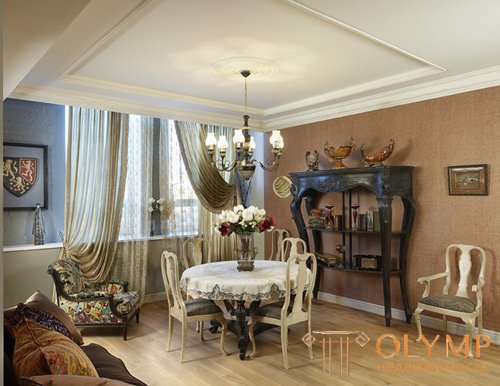
Biedermeier, Biedermeier ( him. Biedermeier ) - artistic style, direction in German and Austrian art, (architecture and design), common in the years 1815-1848.
Biedermeier is an offshoot of romanticism, which replaced the empire, therefore it is sometimes called “a mixture of empire with romanticism”. The Biedermeier reflected the views of the “burgher” environment, the forms of the Empire style were transformed in the spirit of intimacy and home comfort. Biedermeier is characterized by a subtle, thorough image of the interior, nature, and everyday details.
The interiors in the Biedermeier style are characterized by intimacy, balanced proportions, simplicity of forms and light colors. The rooms were bright and spacious, which made the interior rather simple but psychologically comfortable. The walls of rooms with deep window niches, painted in white or other light colors, pasted over with embossed striped wallpaper. The pattern on the window curtains and upholstery was the same. These fabric interior details were colored and contained drawings with the image of flowers.

Biedermeier style in the interior, photo
The main elements of the Biedermeier style:
The ideological premises of this style lie in an unstable political situation in Germany and Austria at that time, when reaction and stagnation prevailed. Anxiety and melancholy necessitated a departure from reality. A typical way out of this state is immersion in a family, in a circle of friends, searching for romance in small life joys. Romantic aspirations become realism.
Biedermeier appeared in Germany at the beginning of the XIX century and It began as a current of German Romanticism, but very soon it degenerated into a limited, petty-bourgeois and sugary naturalism, which nullified romantic daydreaming, idealism and anxiety with “domesticism” and pettiness.
This style was the result of the adaptation of the magnificent palace empire to the needs of ordinary urban inhabitants, and got its name in the second half of the 19th century after the name of the hero of the German poet L. Eyhrodt.
Biedermeier emerged as a natural response to people's desire for a calm and orderly life after decades of revolution and war. At the end of the 18th century, the “English style” began to come into vogue, attracting with its rationality, modesty and simplicity. Wealthy burghers began to order furniture in the style of the English Regency and King George IV (see Georgian style; Regency style in England). From the French Empire, decorators and furniture makers also took only its constructiveness, while softening the corners and straight lines. Once again, after the Rococo style, rounded shapes, gently curved silhouettes, curves of legs and arms of armchairs and sofas became attractive.
In St. Petersburg, the beginning of the Banddermeier is Pushkin time. His characters read and write a lot. This creates a demand for new forms of small desks, secretaries, and a bureau for storing sentimental letters. The atmosphere is complemented by cozy upholstered armchairs, sofas, bookcases, corner cabinets, flower stands, showcases for home collections. The interiors, scenes of a cozy family life, sentimental portraits and rural landscapes in the romance spirit are captured in the paintings and graphics of Biedermeier artists. The most famous artists of Biedermeier: K. Ble-hen. F. Waldmüller, F. Wasmann. K. Zenff, G.F. Körstiig. K. Kotgasser, F. Kruger. F. von of Paradise, L. Richter, I. Dunhauser. F. O. Runge. K. Spitzweg.
The main distinguishing feature of the Biedermeier style is the creation of a bourgeois cosiness, typical of the German bourgeoisie. Everything is simple, convenient, respectable and a little sentimental.
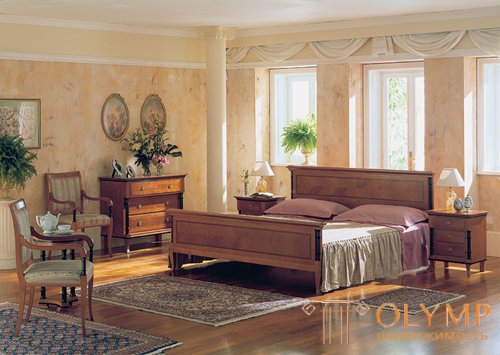
Biedermeier style in the interior, photo
Light and warm colors are used to recreate the Biedermeier style: yellow, blue, pink for bedrooms. The walls are painted in monochromatic colors or covered with wallpaper in a thin strip or with a simple pattern. The floors, usually wooden, are covered with plain carpets. Typical Scandinavian features are common in the North: large bright windows, light blue tones, and fluffy carpets. For the south is characterized by an abundance of bright colors, a large number of vases and thinner carpets on the floor. Another important feature of the German house is the door-chatter, divided in two in the center (that is, only the upper section or the lower section can open).
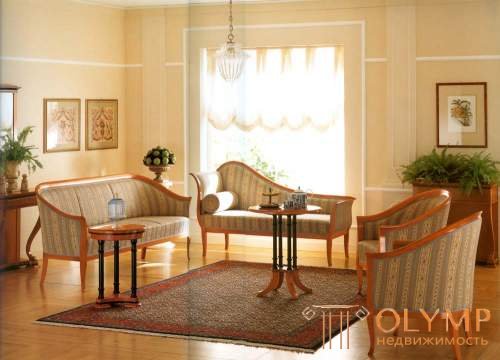
Biedermeier style in the interior, photo
Furniture. The main criteria for this style of furniture is durability, good quality and convenience. Distinctive features of Biedermeier furniture are smoothly curved backs and armrests of chairs, sofas, chairs, curved and chiseled legs of tables and secretaries. The furniture features are borrowed from the Empire style: curvilinear surfaces, soft fabric upholstery, striped fabrics and simple patterns. Furniture is usually used wooden of unpainted or varnished wood, the main thing - curved smooth lines, upholstered seats, backs and armrests, as well as chiseled or bent legs. In some cases, it is possible to apply or imitate gilding. Another distinctive feature of the Biedermeier-style furniture is the fastening of the upholstery fabric to a wooden base with nails with large porcelain hats. Now for this purpose plastic is used.
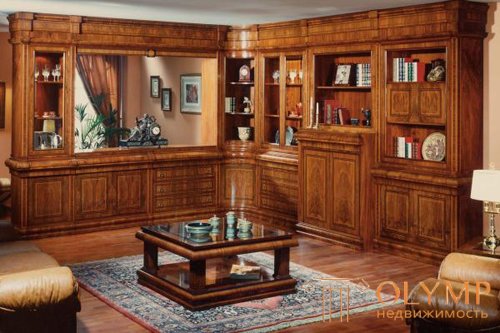
Biedermeier style in the interior, photo
Never before has furniture been so “furniture” in character, that is, free from architectural excesses and alien decor. The simplicity of the furniture forms was compensated by the bright colors of the upholstery and the functional practicality of the furniture structures.

Biedermeier style in the interior, photo
Following the example of the English furniture masters, Biedermeier joiners created various types of “combined” furniture; sliding tables, tables and offices with pull-out and folding worktops, chairs and tables, transformed into a library staircase. At the beginning of the 19th century, rose or mahogany acted as the main material, whereas later it was replaced by walnut veneer and light wood; sweet cherry, pear, maple, poplar and ash. Disappeared common in the XVIII century. furniture made up of many pieces that could be combined or used separately. Recently, widespread canopies for beds have disappeared.
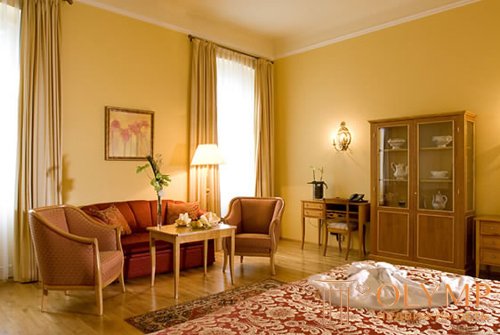
Biedermeier style in the interior, photo
Furniture for the seat, in addition to the sofas, is represented by chairs and armchairs of two types: one is light, comfortable and elegant, the second is made in accordance with the petty-bourgeois concept of comfort. The furnishings of the dwelling are complemented by showcases, bookcases, corner lockers, dressing tables and indispensable, fashionable at the time, small harpsichords (spinetts).
In Biedermeier furniture, the inevitable traces of architectonics are still often found in the form of not very pronounced, immediately schematically solved cornices, timpans, columns or pilasters, and smooth, slightly powerful supports.
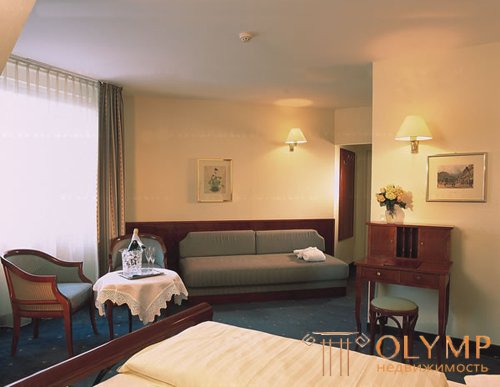
Biedermeier style in the interior, photo
Accessories and features. Walls must be wallpapering without fail, the presence of a fireplace with a large marble mantel is welcome. There are muslin or velvet curtains on the windows, paintings, watercolors and small miniatures on the walls. The Biedermeier style as a whole is also characterized by an abundance of photographs in heavy wooden frames, which can be arranged in unexpected ways. For example, it is now fashionable to hang large photos in thin metal frames on fishing lines, attaching them to the ceiling. This makes the interior is not quite bourgeois, but quite German.
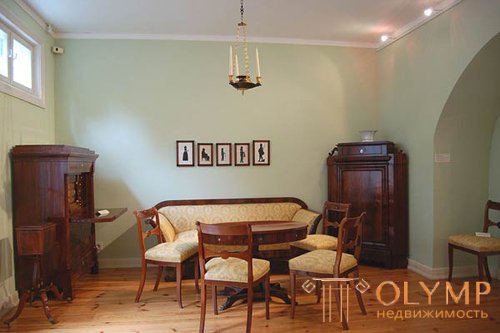
Biedermeier style in the interior, photo
It was then that the concept of “clean room” - a representative room for receiving guests (a kind of imitation of secular salons) - emerged in bourgeois houses. Naturally, she was furnished with special care. The room is filled with a huge amount of furniture, which strives to be grouped in the center and, moreover, so that the voids remain as small as possible.
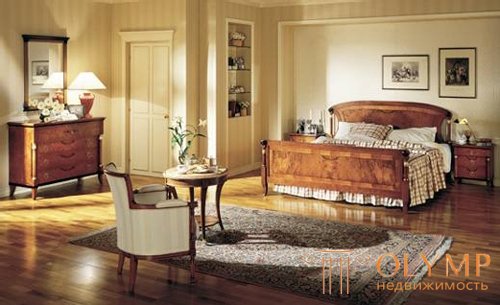
Biedermeier style in the interior, photo
All attention is directed to comfort and coziness. Favorite motif - naturalistically treated flowers, they are everywhere - on wallpaper, carpets, fabrics. The windows were decorated with light muslin curtains and heavy curtains with fringe tassels at the edges.
Biedermeier is the style of a successful bourgeois, primarily German and Austrian.
Convenience, functionality of objects, classical forms, slightly simplified and changed in favor of practicality, brightness, cheerfulness of fabrics - this artistic style is more than all others devoid of ideology and is close to human needs.
Что бы оставить комментарий войдите
Комментарии (0)